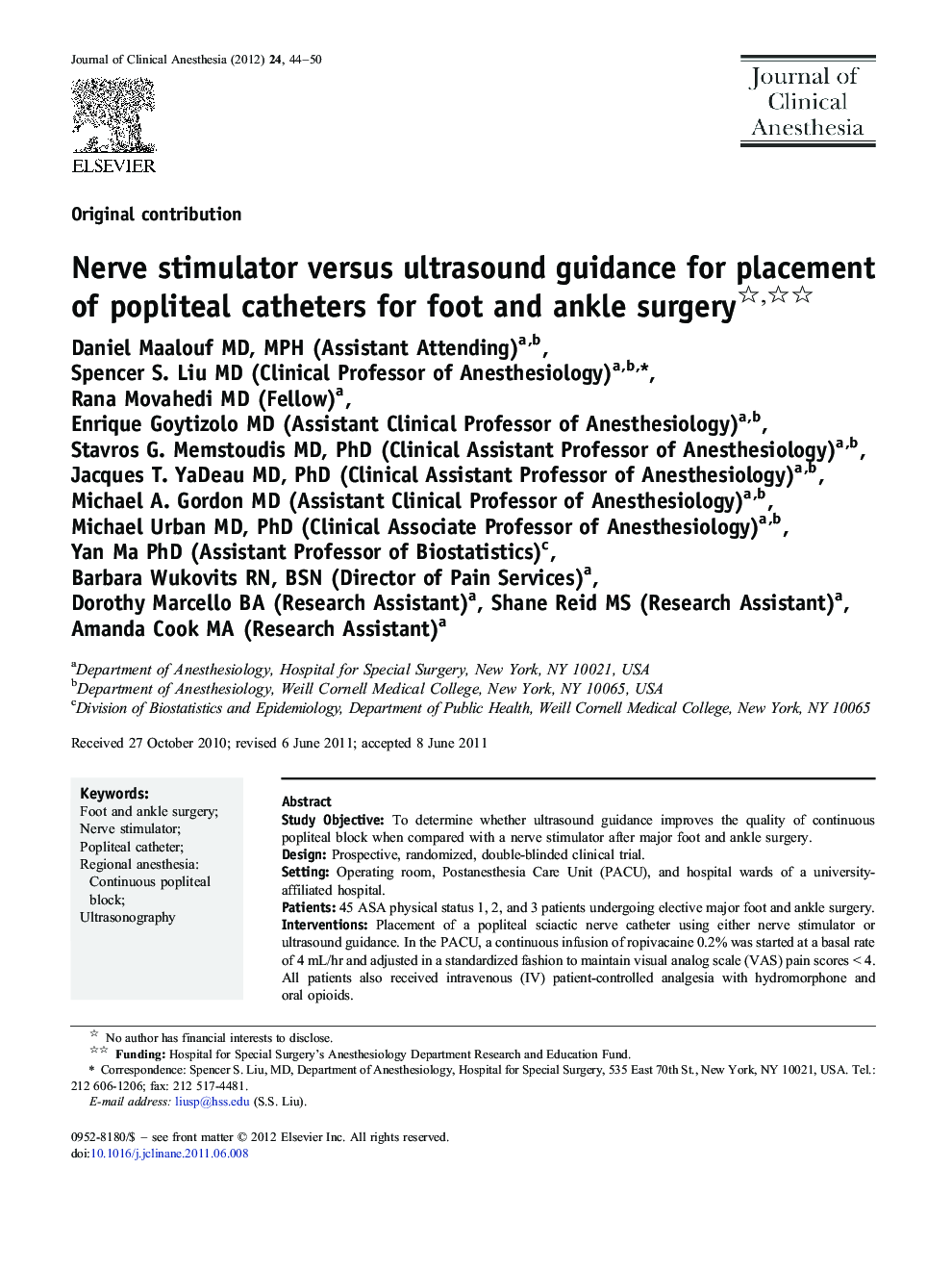| Article ID | Journal | Published Year | Pages | File Type |
|---|---|---|---|---|
| 2762855 | Journal of Clinical Anesthesia | 2012 | 7 Pages |
Study ObjectiveTo determine whether ultrasound guidance improves the quality of continuous popliteal block when compared with a nerve stimulator after major foot and ankle surgery.DesignProspective, randomized, double-blinded clinical trial.SettingOperating room, Postanesthesia Care Unit (PACU), and hospital wards of a university-affiliated hospital.Patients45 ASA physical status 1, 2, and 3 patients undergoing elective major foot and ankle surgery.InterventionsPlacement of a popliteal sciactic nerve catheter using either nerve stimulator or ultrasound guidance. In the PACU, a continuous infusion of ropivacaine 0.2% was started at a basal rate of 4 mL/hr and adjusted in a standardized fashion to maintain visual analog scale (VAS) pain scores < 4. All patients also received intravenous (IV) patient-controlled analgesia with hydromorphone and oral opioids.MeasurementsVAS pain scores at rest and with physical therapy, ropivacaine use, opioid use, and opioid-related side effects were recorded.Main ResultsCummulative ropivacaine use was lower in patients whose catheter was placed by ultrasound than by nerve stimulator guidance (mean 50 vs 197 mL, P < 0.001). Pain scores at rest and during activity were similar between groups. Cumulative opioid consumption (mean 858 vs 809 mg oral morphine equivalents) and daily frequencies of nausea (5% to 33% vs 0 to 24%) and pruritus (0 to 21% vs 0 to 24%) were similar between groups. Length of hospital stay was similar between groups (3.5 vs 3.7 days).ConclusionsUltrasound guidance was associated with less local anesthetic consumption than with the nerve stimulator; however, there was little clinical benefit, as all other outcomes were similar between groups.
